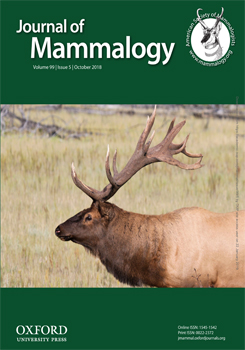The California mouse (Peromyscus californicus) inhabits semiarid oak (Quercus spp.) woodlands and shrublands of California's southern Coast Ranges and lower slopes of the western Sierra Nevada. From 1993 to 2014, we studied the demography of California mice in semiarid oak woodland in coastal-central California. Using capturemark-recapture (CMR) methods, we estimated apparent survival (ϕ), recruitment (f), and realized population growth (λ), and tested for the effects of climatic covariates on these demographic rates. Monthly ϕ averaged 0.869, but it varied temporally between 0.507 and 0.954. Monthly f averaged 0.146 and ranged from 0.027 to 0.556. Monthly λ averaged 0.996; however, λ also exhibited strong temporal variation, ranging from 0.636 to 1.373. Tests of singular covariate models revealed that ϕ was positively influenced by total rainfall (regression coefficient, β = 0.449), but negatively influenced by average temperature (β = -0.394) and by variability in temperature (β = -0.412) and rainfall (β = -0.147). Recruitment was positively affected by total rainfall (β = 0.203) and rainfall variability (β = 0.120); it was negatively affected by temperature variability (β = -0.162). However, the effect of rainfall and temperature on California mice varied across seasons. During winter, high temperature increased both ϕ (β = 0.690) and f (β = 0.754), but in summer these hot conditions reduced ϕ (β = -1.087) and f (β = -0.517). Rainfall positively affected ϕ in both seasons (β = 0.141 in winter; β = 0.614 in summer). Although rainfall positively affected f in winter (0.319), it had no discernible effect in summer. Warmer, drier, and more variable climatic conditions, together with increasingly pervasive habitat alterations, especially wildfire, may threaten the persistence of some California mouse populations.
How to translate text using browser tools
1 August 2018
Climatic influences on demography of the California mouse (Peromyscus californicus) in semiarid oak woodland
William D. Tietje,
Anne Y. Polyakov,
Virginie Rolland,
James E. Hines,
Madan K. Oli
ACCESS THE FULL ARTICLE

Journal of Mammalogy
Vol. 99 • No. 5
October 2018
Vol. 99 • No. 5
October 2018
California mouse
climate change
climatic effects on demographic parameters
demography
population growth rate
Pradel's model
realized population growth rate




